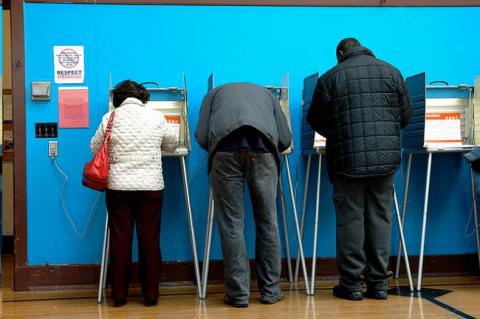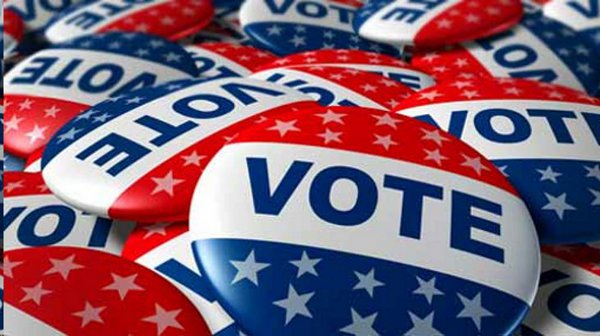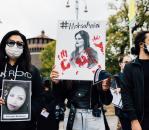Voter Suppression Tactics in Ohio

From The Afro and our content partner New America Media:
It was a sunny March morning when Ohio State Sen. Nina Turner (D) and her small band boarded the No. 4 bus, beginning their trek from the Walnut Hills neighborhood of Cincinnati to a proposed new county Board of Elections in Mount Airy.
The trip, she said, was meant to show how a decision to move early voting from downtown to the suburbs would make it extremely difficult for Hamilton County voters that didn’t have a vehicle.
“It took two buses – the second bus was late; one and a half hours one way, and that doesn’t even count the time voters will spend waiting to vote; a half-mile walk since the bus didn’t stop outside the site,” then they had to trod up a long driveway with no sidewalks since the building was situated some way off the street, Turner recalled.
“This is patently unfair,” said the lawmaker, who was joined by other Democratic colleagues and community activists. “How many hurdles should you have to jump to vote?”
According to the U.S. Census Bureau’s 2012 American Community Survey, almost 13 percent of Hamilton County households –mostly in Cincinnati—do not own a vehicle, creating a potential barrier to early voting given the relatively difficult access to the new site.
It is but one of several new laws and policies that rolls back access to the ballot box in Ohio, voting advocates say.
“Unfortunately, in the state of Ohio, our GOP-led Legislature and governor’s mansion is using their political clout to roll back the hands of time,” said Turner. “My heart hurts that we are fighting the same battles that our ancestors already fought and died for.”
The current wave of restrictive voting laws in Ohio began in 2010 when an omnibus elections law bill, HB 194, was introduced in response to the spectacular breakdown of the state’s voting system, such as the extremely long lines in the 2004 presidential election.
Among provisions in the bill were some that would cut the early voting period in half (from 35 days to 16 days) and limit the hours for early voting, cutting out Sunday altogether.
“Considering how popular early voting had become in Ohio it was a little bit shocking that the Legislature wanted to reduce early voting,” said Sonia Gill, counsel, Lawyers’ Committee for Civil Rights Under Law’s Voting Rights Project.
Signatures were collected for a referendum to overturn the legislation, but lawmakers repealed the bill before voters could act.
Since 2012, however, the tide has changed, bringing a flurry of legislation that could reduce broad participation in the elections. This year, alone, the Ohio General Assembly has passed and Gov. John Kasich (R) has signed bills that shave days off the early voting period and completely eliminates “Golden Week,” a brief window when voters could register and vote early on the same day; prohibits anyone but Secretary of State Jon Husted from mailing unsolicited absentee ballots to voters and makes it more difficult to count provisional ballots.
Husted has also set statewide, uniform early voting hours that contain no evening or Sunday hours, making it more difficult for working Ohioans to vote early and negating “Souls to the Polls,” an initiative of the faith community to mobilize their congregations to the polls on Sundays.

Secretary Husted’s platform of “uniformity” only “sounds reasonable,” Gill said, but it’s not since different counties have different populations with different needs and local administrators would know what is best for their voters.
Furthermore, she added, the policies disproportionately impact African Americans, who utilize early voting at higher rates. For example, she cited, one study showed that African Americans in Cuyahoga County voted early at 26 times the rate of White voters, accounting foron-quarter of overall voter turnout but three-quarters of early in-person voter turnout.
“There should have been some accounting for this being a preferential method [of voting] for this community, but there was not,” Gill said.
But then, that was probably deliberate, activists say. While Republicans tout voter fraud as the justification for increasingly restrictive elections laws, there is little evidence of that phenomenon, they say. Conversely, there is more evidence that such laws are designed to reduce participation by minorities, the poor and other groups that tend to vote Democrat.
“It’s politics. It’s a margins game,” Gill said. “Elections are decided by slim margins so when you manipulate the rules to create greater burdens to vote, ultimately, it’s going to reduce political participation.”
The adverse impact of these voter suppression laws is magnified by recent Supreme Court decisions that gutted Section 5 of the Voting Rights Act and made it easier for corporations to influence elections, Sen. Turner said.
The effect will be the “polluting” of American democracy with money and the suppression of the voices of poor and working-class Americans, she added.
Turner said in addition to the March bus ride, she has highlighted and fought back against the harmful policies with legislation and other advocacy, and she is also running for the position of secretary of state in this year’s midterm elections.
She urged fellow Ohioans to take a similar stand at the polls, like they did in 2012 when lawmakers tried to enforce similarly suppressive laws.
“A lot of people in 2012 gave a protest vote,” she said. “I’m hoping people will have that same spirit in 2014.”
From The Afro






























































































































































































































































































































